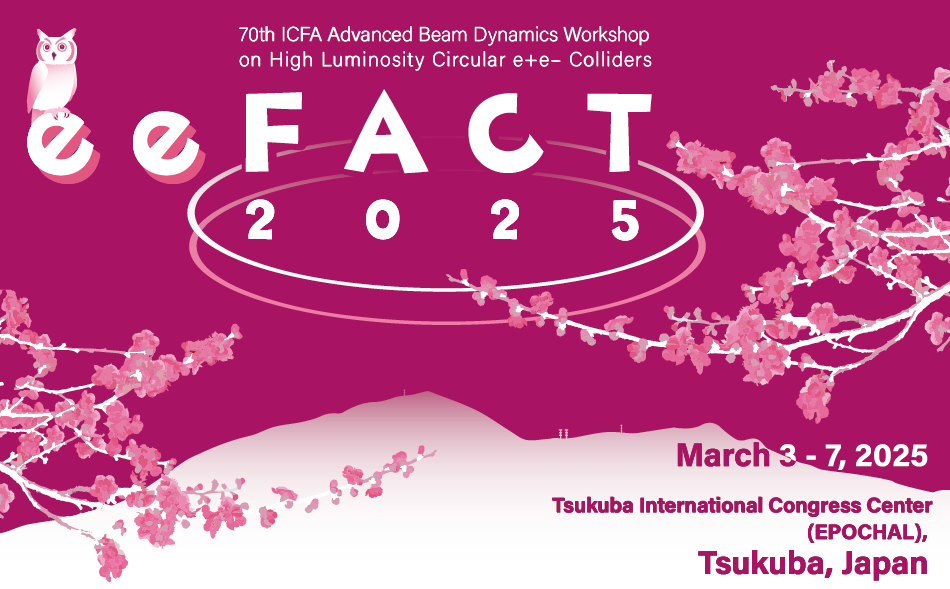Super Tau-Charm Facility (STCF) was proposed as a third-generation circular electron-positron collider in the energy range of 2-7 GeV (CoM) and with a luminosity greater than 5*10^34 cm^-2s^-1 @4 GeV, aiming to explore charm physics and tau physics in the next decades. This presentation will introduce the facility design and R&D efforts for STCF, including the design goal, accelerator and...
SuperKEKB operations resumed in 2024 after the first long shutdown (LS1). A nonlinear collimator was installed to reduce an impedance while keeping background mitigation. Sudden beam loss (SBL) events have been observed when the beam current increases for these years. It is difficult to explain with ordinary beam instabilities, however, several types of monitors have been installed to observe...
The presentation gives an overview of the main technical challenges of the HL-LHC project, describes the key upgrade ingredients and outlines the lates schedule projections.
In 2020, the European Strategy for Particle Physics Update (ESPPU) recommended an Electroweak and Higgs-factory as the highest priority next collider after completion of the High-Luminosity Large Hadron Collider (HL-LHC), to be followed by a hadron collider with a center-of-mass energy of about 100 TeV. The so-called integrated Future Circular Collider (FCC) program would fulfill this...
The Electron-Ion Collider (EIC) project is well underway at Brookhaven National Laboratory. The EIC aims at achieving peak electron-proton luminosities of up to $10^{34}$ cm$^{-2}$ sec$^{-1}$, covering a wide range of the center-of-mass collision energy, as well as a high level of polarization. The project configuration has recently been optimized to relocate the Rapid Cycling Synchrotron into...
testtest

